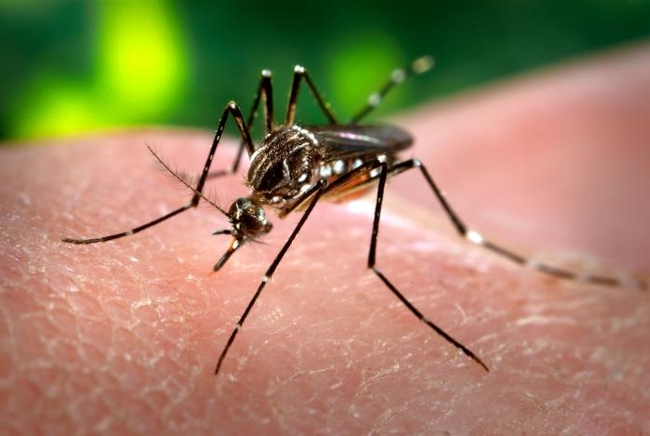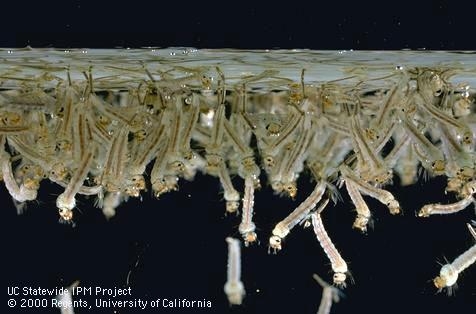Posts Tagged: Mosquitoes
Scientists enlist male mosquitoes in fight against disease
Mosquitoes are being turned into mosquito-control workers with the help of scientists at the UC Kearney Agricultural Research and Extension Center in Parlier, reported Barbara Anderson in the Fresno Bee.
Kearney, one of nine UC Agriculture and Natural Resources research and extension facilities across the state, houses a mosquito research lab led by UC Davis entomologist Anthony Cornel. Cornel and his staff are working with the Consolidated Mosquito Abatement District to tacking Aedes aegypti mosquitoes, which have plagued a southeast Clovis neighborhood for three years. Aedes aegypti are capable of spreading dengue, yellow fever and chikungunya.
The scientists are trying a novel control approach. They collected mosquito eggs in Clovis and shipped them to a laboratory in Kentucky, where thousands of harmless male Aedes aegypti mosquitoes were bred. The insects were then dusted with a pesticide and released to mate with females in the infested area. The pesticide doesn't allow the female to produce viable offspring. When the mosquitoes were released, small cups of water were placed nearby to monitor activity. If the water contained pesticide from the mosquitoes, it would kill mosquitoes back in the lab.
“Two weeks ago, we saw really good activity, a lot of the water we brought back resulted in death,” Cornel said. “Last week's water, we didn't see much death, so we're not sure why.”
But because of the initial success, the scientists are not about to scrap the project.
Mosquitoes Take the Spotlight: Front Line and Center
Mosquitoes will take the spotlight, front line and center, this month. On Wednesday, April 8, Regents Professor Michael Strand of the University...
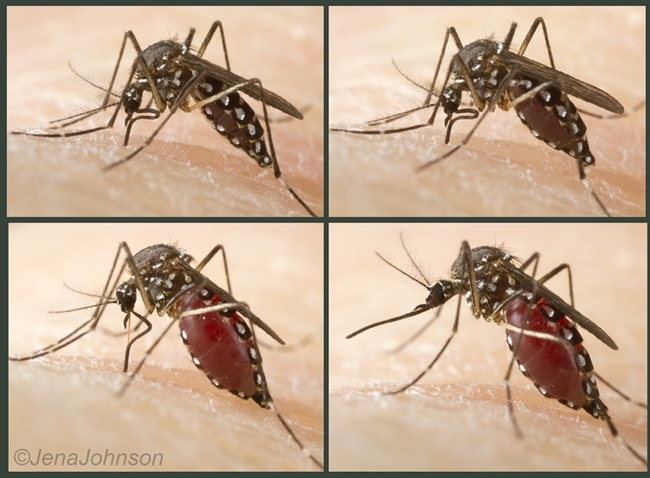
Aedes aegypti feeding on its host. (Photo by Jena Johnson)
Eight Decades of Bees 'n Skeeters
Quick! What do you think of when someone mentions "honey bees and mosquitoes" in the same sentence? Honey bees are the pollinators, the beneficial...

Extension apiculturist (emeritus) Eric Mussen with his engraved clock from the Almond Board of California. (Photo by Kathy Keatley Garvey)
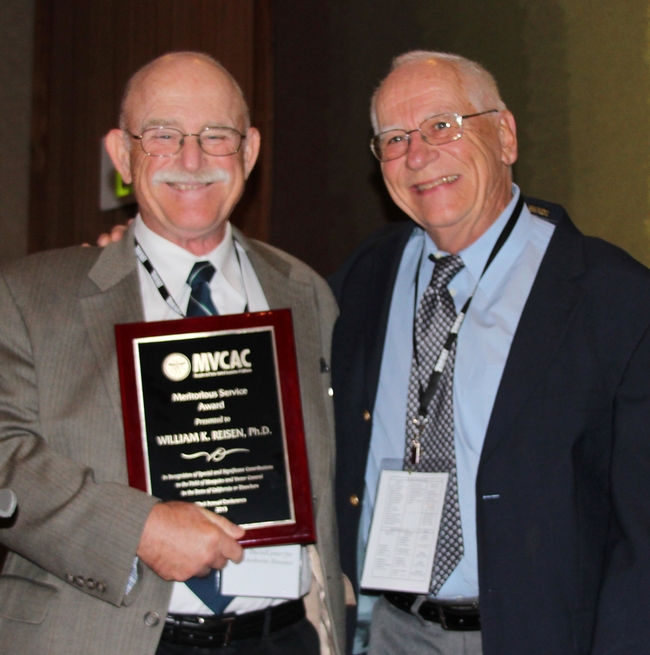
Medical entomologist William Reisen (left) with a MVCAC plaque presented by Bruce Eldridge, UC Davis emeritus professor of entomology. (Photo by Jill Oviatt, MVCAC)
Anthony Cornel Knows Mosquitoes
Medical entomologist Anthony “Anton” Cornel knows his mosquitoes--and a few snakes, too. When he was doing research in Brazil in...
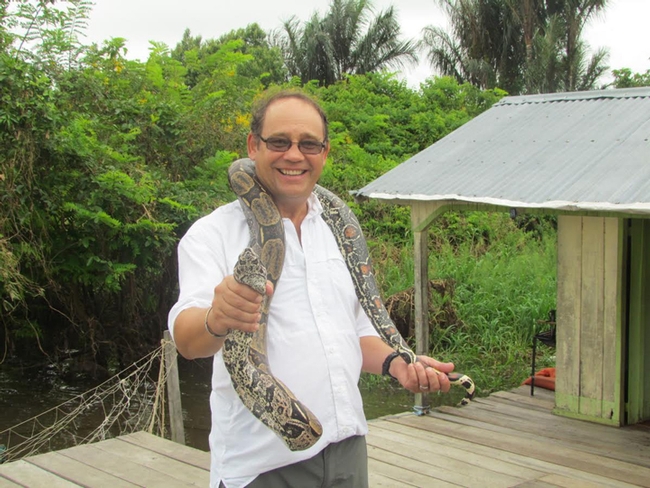
Medical entomologist Anthony Cornel with a snake in Brazil.

UC Davis medical entomologists Anthony Cornel (foreground) and Gregory Lanzaro make annual trips to Mali to study malaria mosquitoes.
Mosquito management for ponds, fountains and water gardens
Mosquitoes can be managed using an integrated approach that relies mostly on prevention, using biological and chemical controls when necessary. The key strategy is to eliminate all potential breeding sites; even one ounce of standing water can support a population of larvae. What can be done, however, when an outdoor space contains a water element? Here are a few tips.
Water features in the landscape will invariably attract adult mosquitoes, but attempting to control them or prevent their egg laying is difficult. Larvae are easier to manage, since they are concentrated in known areas, don't yet bite, and can't fly away. Larvae prefer shallow water that is less than 24 inches deep, so install water features that are deeper than 2 feet. Ponds or features that provide a steep slope or have vertical walls that quickly drop off into deep water will also be less favorable to mosquitoes. Adding a fountain, waterfall, or other device increases water circulation and reduces the stagnation that allows mosquitoes to breed.
Remove excess vegetation and organic debris that provide mosquito larvae with food, shelter from the sun, and hiding places from predators.
In natural environments, bacteria, nematodes, other insects, crustaceans, and fish often keep numbers of mosquito larvae low. Conserve predators such as dragonflies and backswimmers, which may have colonized ponds, by avoiding broad-spectrum insecticides and consider introducing fish. County vector control services may provide free mosquito fish, voracious consumers of mosquito larvae and pupae. Never release mosquito fish into natural water bodies, since these fish aren't native to California and can disrupt ecosystems.
Although these measures will prevent problems in most cases, mosquito larvae may still develop in some ponds.
In gardens with lots of plants growing in still water, it may be impossible to keep mosquitoes from breeding. Regularly check water features for larvae, which periodically come to the surface to breathe through abdominal siphons Watch for the larvae's characteristic wriggling movement, or use fine dip nets to monitor for larvae. It is important to act quickly to kill mosquitoes when they are small, easiest to manage, and before they become adults and start biting.
Larvicides containing spores or metabolites of the bacterium Bacillus thuringiensis israelensis (Bti) (e.g., Mosquito Dunks, Mosquito Bits, Microbe-Lift, and other products) act as stomach poisons when ingested, killing larvae within a few days. Bti affects only fly larvae, so it won't harm predatory insects living in the pond or water feature. Another effective larvicide is the insect growth regulator (IGR) methoprene (e.g., Pre-strike Torpedos). IGRs interfere with larval molting and also take a few days to kill, but they have a broader spectrum of activity, affecting most juvenile insects and other arthropods that might be in the pond. Both Bti and methoprene are available as granules or pellets, remain effective for about a month, and as with all pesticides, should be used only according to label directions.
For more information about mosquitoes, visit http://www.ipm.ucdavis.edu/PMG/PESTNOTES/mosquitoes.html.
This article by Andrew Sutherland, UCCE advisor in the San Francisco Bay Area and UC Statewide IPM Program, was originally published in the June 2013 issue of the Retail Nursery and Garden Center IPM News. Read the entire article at http://www.ipm.ucdavis.edu/RETAIL/retail-newsletter.html


